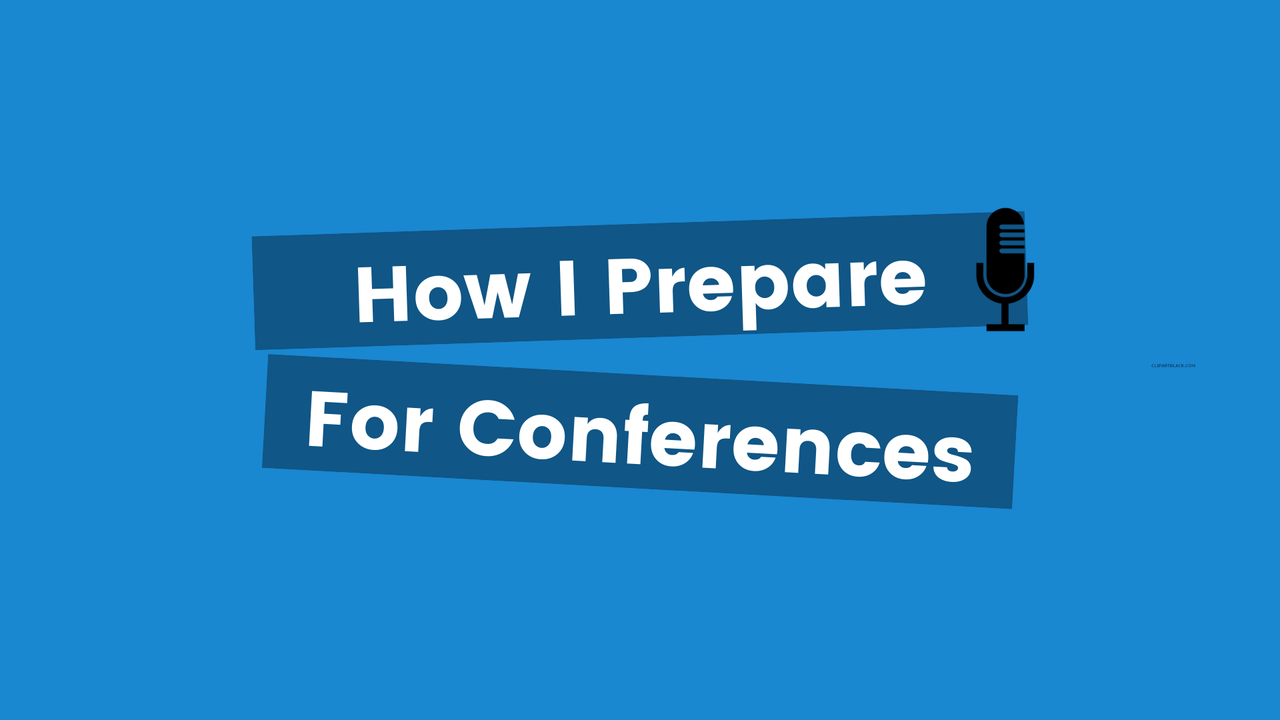How I Prepare for Conference Talks

Last week I was asked by Damian Montero (here’s the tweet) how I prepare for giving conference talks. I was pretty flattered to be asked this, so I figured I would make a quick post to share some thoughts!
Submitting a Proposal
Ever heard the phrase “You can’t hit a home run if you don’t swing”? Well, same thing applies here. You won’t ever be a speaker if you don’t submit a proposal. So that’s where it starts, the proposal. If you’re interested in being notified when CFP (call for proposals) become available, I would check out CFP Land!
You can’t get in if you don’t apply!
I’ve given lots of talks over the last 5 years, but I wanted to share some numbers for transparency. Last year, I applied to 10 conferences and only got into 1. This year, I applied to 10, got into 6 and wait listed at another. You might get rejected, but you can’t get in if you don’t apply!
There’s no better motivator than not wanting to look like an IDIOT in front of a room full of people!
You’ll hear from a lot of speakers that they submit talks on content they haven’t yet written or an app they haven’t yet built. This is pretty much true for me as well. If you want to force yourself to learn something new, there’s no better way to motivate yourself than getting accepted to speak at a conference.
Creating the Content
After settling on a topic, I walk through a few different steps.
- Save a bunch of random notes, links, and thoughts in whatever format works best
- Create section headlines to outline the talk
- Fill in sections with raw content (no styling or very little)
- Beautify the content!
- Add jokes and gifs :)
- Write speaker notes!
This last part is actually pretty important. You don’t want to talk AT people for an hour. You want to engage them, make them laugh, make them cry, etc. With practice, you’ll learn how to gauge your audience better and better.
Live Coding? Think Twice!
Live coding is REALLY hard. Not saying I don’t do it, but it is definitely a challenge. Let’s just say it’s hard to type accurately when you’re nervous and a room full of people are waiting on you to impress them :)
Here’s a couple of things you can do to help.
- Keep in mind, network might be limnited
- In case network is an issue, pre-record a video of the demo
- Create snippets so you don’t fumble
- Create progressive branches that you can checkout if you mess up
- Have a notes page on another monitor with code you’re typing or hints at least
Practice, Practice, Practice!
After you’ve got your content prepared, you have to practice. This means talking through the ENTIRE deck presenting it out load either to yourself or a real person. If you have someone with speaking experience, ask them for help!
By practicing a few times, you’ll gain a few benefits.
- Become less dependent on slides
- Transitions become more comfortable
- Nail your timing (you might have to add or cut content)
After you’ve practiced, make any changes in content to make sure things fit well and then practice again :)
Interacting with the Audience
There’s nothing more awkward than the few minutes before a talk starts. You’ve got a room full of people who don’t know each other that well and don’t know what to do. I take advantage of this and engage with the audience to try and fill that silence. Basically, I embrace that awkwardness :)
This helps me in two ways.
- Build a small relationship with attendees
- Calm down when I’m nervous
I’ve given probably 50 talks/presentations and I get nervous every single time!
Talking to the crowd helps me relax a bit. I’ve done lots of talks but I still struggle with nerves. However, at this point, I know the small things I can do to make sure I make it through smoothly.
Wrapping Up
If you’re interested in knowing more about how I choose topics, create content, etc. I’d love to hear from you on Twitter @jamesqquick! Maybe I’ll follow up with more detailed posts.